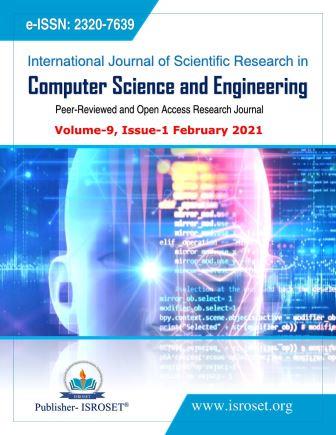A Next-Gen Power Generation Using Simulation And Machine Learning Forecasting
Keywords:
hydroelectric power plant, machine learning, SVM, ANN algorithm, sensorsAbstract
Renewable Energy in India is considered to be the foundation of the economy for all over this society and went to reach the end our economy of India depends upon. Also a critical factor in imaging sustainable Society renewable energy prominently depends upon the local environmental and ambiance conditions such as temperature rainfall in other ratios. For hydropower currently is the primary renewable source which is harmonizing to the electricity supply and its future participation is about to increase significantly.The appropriate forecasting of the energy management is very crucial issue for the available power management process. In this paper we have used several machine learning techniques for nominal forecasting of the energy produced by the several hydroelectricity power plants in India. Machine learning is considered to be a powerful tool for predicting the future nature of the data which is collected for the past history. Some machine learning taking and expecting the features and it will protect our take the decision for the future outcome. So in this paper we have used the previous data sets of the team for predicting the forecasting of the energy produced by the hydroelectric power plants. The manually operating hydro electric power plant turbine and generator of include some problem with the lowest speed and all the other elliptical and then deleted problems. The utmost power following system created by the most favorable load between the voltage and current produced by an Electromagnetic generator, in this paper we have used sensor system which is developed to measure the power originator in transformation characteristics between the rotational power through the automatic power generator and the turbine system. We have used the Adriano sensor which is embedded in the turbine and generator which will ultimately do all the functionality of the hydroelectric power plant.
References
K.-J. Chae, et al.”Reliable energy recovery in an existing municipal wastewater treatment plant with a flow-variable micro-hydropower” s Energy Convers. Manage., 101 (2015), pp. 681-688
Henrique D. Machaado de Azevedo, Alex M. Ara´ujo, and Nad`ege Bouchonneau. “A review of wind turbines bearing condition monitoring: State of the art and challenges”. In: Renewable and Sustainable Energy Reviews 56 (2016), pp. 368–379.
Luka Selak, Peter Butala, and Alojzij Sluga. “Condition monitoring and fault diagnostics for hydropower plants”. In: Computers in Industry 65 (2014), pp. 924–936
K. Hatalis, P. Pradhan, S. Kishore, and R.S Blum. “Multi-step forecasting of wave power using a nonlinear recurrent neural network”In Proceedings of the PES General Meeting — Conference Exposition, pages 1–5, National Harbor, MD, June 2014.
R.J. Hyndmann and A.B. Koehler. “Another look at measures of forecast accuracy” International Journal of Forecasting, 22:679–688, 2006.
E. Izgia, A. Oztopalb, B. Yerlib, M.K. Kaymakb, and A.D. Sahinb. “Determination of the representative time horizons for short-term wind power prediction by using artificial neural networks”. Energy Sources, Part A: Recovery, Utilization, and Environmental Effects, 36:1800–1809, 2014. [7] W.-Ch. Wanga, K.-W. Chauc, Ch.-T. Cheng, and L. Qiu. “A comparison of performance of several articial intelligence methods for forecasting monthly discharge time series”. Journal of Hydrology, 374:294–306, 2009.
A.K. Yadav, A.K.and Sachan.” Research and application of dynamic neural network based on reinforcement learning”. In Proceedings of the International Conference onInformation Systems Design and Intelligent Applications, Advances in Intelligent and Soft Computing, pages 931–942, Visakhapatnam, India, January 2012. Shpringer. [9] Doucoure, B.; Agbossou, K.; Cardenas, A. “Time series prediction using artificial wavelet neural network and multi-resolution analysis: Application to wind speed data” Renew. Energy 2016, 92, 202–211.
N. Sharma, P. Sharma, D. Irwin and P. Shenoy, "Predicting solar generation from weather forecasts using machine learning", 2011 IEEE International Conference on Smart Grid Communications (SmartGridComm), pp. 528-533, 2011.
Elbatran, A. H., Yaakob, O. B., Yasser, M. Ahmed, Shabara, H. M. 2015. “Operation, Performance and Economic Analysis of Low Head MicroHydropower Turbines for Rural and Remote Areas”: A Review. Renewable and Sustainable Energy Reviews. 4340–50.
M. Rana, I. Koprinska and V. G. Agelidis, "Solar power forecasting using weather type clustering and ensembles of neural networks", International Joint Conference on Neural Networks (IJCNN), pp. 4962-4969, 2016.
A. Alfadda, R. Adhikari, M. Kuzlu and S. Rahman, "Hour-ahead solar PV power forecasting using SVR based approach", IEEE Power & Energy Society Innovative Smart Grid Technologies Conference (ISGT), pp. 1-5, 2017.
T. Bøckman, S. Fleten, E. Juliussen, H. J. Langhammer, and I. Revdal, “Investment timing and optimal capacity choice for small hydropower projects,” European Journal of Operational Research, vol. 190, no. 1, pp. 255–267, 2008.
P. Coulibaly, F. Anctil, and B. Bobée, “Daily reservoir inflow forecasting using artificial neural networks with stopped training approach,” Journal of Hydrology, vol. 230, no. 3-4, pp. 244–257, 2000.
Elizabeth Tomko emtomko, James Whyte “Development of Electricity Generation and Sensor System for a Hydropower Propagating Wave Turbine”.
Downloads
Published
How to Cite
Issue
Section
License

This work is licensed under a Creative Commons Attribution 4.0 International License.
Authors contributing to this journal agree to publish their articles under the Creative Commons Attribution 4.0 International License, allowing third parties to share their work (copy, distribute, transmit) and to adapt it, under the condition that the authors are given credit and that in the event of reuse or distribution, the terms of this license are made clear.







